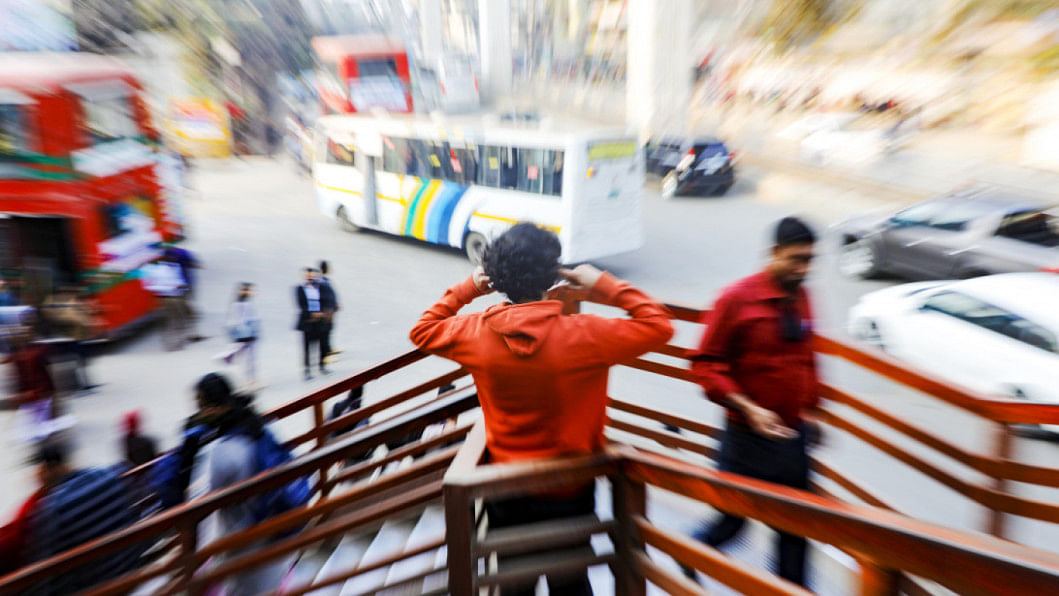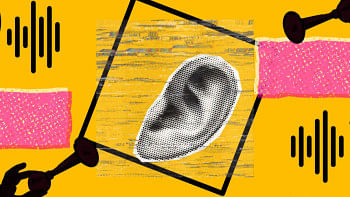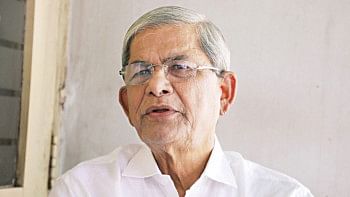How to quiet Dhaka's horn habit

If you are a pedestrian or a regular commuter in a city like Dhaka, the constant blare of vehicle horns is an unavoidable part of your everyday life.
A few months ago, I visited an ENT specialist for a temporary ear issue. I shared my concerns about the relentless noise pollution on the roads, especially from motorbikes, buses, and private cars. To my surprise, the doctor revealed that he, like many others, had replaced his car horn because the original one made too low a sound to reach commuters' ears. What does this signify? Are we unknowingly adapting to an increasingly aggressive acoustic environment, risking our mental well-being and gradually damaging our natural hearing?
In Dhaka, traffic noise far exceeds tolerable levels. According to the UNEP Frontiers 2022 report, the city's traffic generates up to 119 decibels (dB)—the highest among the reported countries. The World Health Organization (WHO) recommends that long-term exposure to noise from road traffic should not exceed 53 dB during the day-evening-night period and 45 dB during the night to avoid adverse consequences on health. UNEP data shows that a motorbike horn alone typically produces around 90 dB, often louder in congested Bangladeshi streets. I consider this a form of torture for every commuter—though less so for those in air-conditioned vehicles.
WHO warns that regular exposure to such noise can rupture the ear's tympanic membrane and cause sleep disruption, cardiovascular disease, cognitive impairment, and hearing loss. The UNEP report states that in Europe, long-term exposure to environmental noise contributes to 48,000 new cases of ischaemic heart disease and 12,000 premature deaths annually. Can we imagine the numbers for Bangladesh? Sadly, we lack the data.
Bangladesh has laws for controlling noise pollution, but enforcement remains feeble. The Noise Pollution (Control) Rules 2006 prohibit sound levels above 50 dB in silent areas, 55 dB in residential zones, and 70 dB in commercial zones during the day. Violators may face jail, fines, or both. However, penalties are rare.
One reason for this weak enforcement is the lax approach to holding violators accountable. The 2006 rules set a maximum noise limit of 85 dB for motor vehicles, measured 7.5 metres from the silencer pipe. But continuous monitoring and enforcement are difficult. If someone lodges a complaint verbally or in writing, the authorities may act after an investigation. A lack of manpower further hampers intervention. Though the rules offer comprehensive sound management guidelines, a dedicated policy for road traffic noise, with ongoing monitoring and accountability mechanisms, could be more effective.
The Ministry of Environment, Forest, and Climate Change announced stricter measures against unregulated horns in November last year. This is a bold step, but doubts remain. For any new policy to succeed, it must address the limitations of past efforts, especially how violators will be held accountable. Without meaningful reform, the status quo will continue.
The ministry also launched a nationwide awareness campaignto discourage noise pollution. While potentially impactful, I observed some early pilots in Dhaka and found vehicles honking even louder in front of campaigners. Honking is deeply ingrained among drivers; awareness alone will not change that. Campaigns must be paired with effective penalties.
But enforcement raises practical questions: How do we track if a vehicle exceeds horn limits at every junction or road? Will the government install decibel meters everywhere? Can noise be traced to individual vehicles? And who will enforce these rules—the traffic police or a new unit?
Declaring certain areas as silent zones seems a simpler option. Yet this too fails without proper enforcement. A report by The Business Standard found that sound pollution rose by nearly 1 percent in a designated silent zone near Hazrat Shahjalal International Airport in October 2024.
So, what can the authorities consider? First, clear communication. Residential, commercial, industrial, or mixed-use areas should be properly demarcated, and sound limits communicated. Public awareness of health risks should extend beyond symbolic demonstrations and be amplified through media and street campaigns.
Second, target the problem at the source. Vehicle fitness tests should prioritise horn type and volume. High-decibel horns, including hydraulic types, must be banned. Imported vehicles should retain their original, environmentally friendly horn systems, with no post-import modifications allowed. Incentives for quieter horns and classification of alterations as offences under updated rules could help ensure compliance.
Another innovative solution is a mobile app that allows citizens to measure and report vehicle noise levels instantly. Real-time data would empower authorities to monitor and fine offenders more effectively.
Sound pollution is a complex, long-term challenge. Yet cultural change—supported by improved road infrastructure, noise barriers, clear regulations, health education, and research-based soundscape planning—can lead to meaningful noise reduction over time.
Md Karimul Islam is research associate at the BRAC Institute of Governance and Development (BIGD), Brac University.
Views expressed in this article are the author's own.
Follow The Daily Star Opinion on Facebook for the latest opinions, commentaries and analyses by experts and professionals. To contribute your article or letter to The Daily Star Opinion, see our guidelines for submission.


 For all latest news, follow The Daily Star's Google News channel.
For all latest news, follow The Daily Star's Google News channel. 




Comments